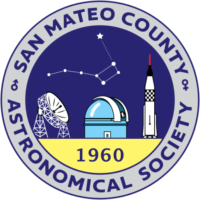Compiled by Ken Lum
Images from original email missing
=============================
Tuesday, 01/23/24 3:30 PM
In-person
Hewlett Teaching Center
370 Jane Stanford Way, Room 201
Stanford University
Stanford, CA 94305
The distribution of the Cosmic Neutrino Background on the surface of the Earth
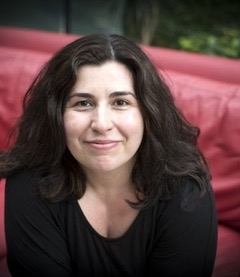
The Cosmic Neutrino Background (CNB) is a relic of the pre-CMB era which encodes a trove of information about the early Universe and the neutrino sector dating back to when the Universe was less than a second old. In this talk, I will argue that the Earth can significantly alter the local distribution of relic neutrinos and antineutrinos. While neutrinos are repelled from the Earth due to the weak interaction with matter, antineutrinos are attracted. This difference in behaviour results in an relative overdensity of neutrinos close to the Earth’s surface that enhances the primordial neutrino-antineutrino asymmetry by 5 orders of magnitude. This enhancement persists in a 7-meter band around the Earth’s surface, a scale set by the evanescent wave scale for neutrinos. This effect opens up new opportunities for the detection of these elusive relic neutrinos in a laboratory setting.
Speaker: Asimina Arvanitaki
Cost: Free
=============================
Tuesday, 1/23/2024
7:15 PM – 9:00 PM Pacific
In-person and recorded
Mt. Diablo Astronomical Society
Lindsay Wildlife Experience
1931 First Avenue
Walnut Creek, CA 94597
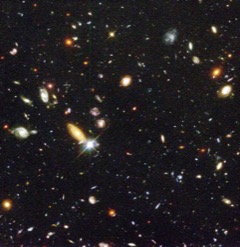
Speaker: Jeff Adkins, MDAS, Los Medanos
Topic: The Hubble Deep field lab – estimating how many galaxies there are in the universe
Website: https://nightsky.jpl.nasa.gov/event-view.cfm?Event_ID=127682
=============================
Thursday, 01/25/24 3:30 PM
In-person
Physics North
UC Berkeley
Room 1
Berkeley, CA 94720

Interstellar Interlopers
Speaker: David Jewitt, UC Los Angeles
Website: https://astro.berkeley.edu/news/events/astronomy-colloquium/
Cost: Free
=============================
Thursday, 01/25/24 6:00 PM
Livestream
Night Sky Network
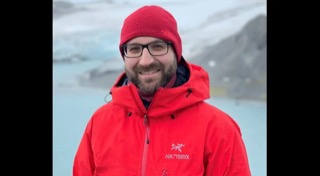
Finding Aliens on Earth – Livestream
Finding life outside of Earth is one of the most interesting topics of Planetary Science. Is life possible on other planets? If so, on which ones? What would it be like, and what would they use as an energy source?
Speaker: Miguel Á Fernández, Universidad Autónoma de Madrid, Spain
Watch on YouTube here.
https://www.youtube.com/watch?v=jiVmt6GHR2k
Cost: Free
=============================
Friday, 01/26/24
12:00 PM – 01:00 PM
In-person
Earth and Marine Sciences Building
UC Santa Cruz
Room A340
Santa Cruz, CA 95064
Peering inside giant planets with giant laser dynamic compression experiments
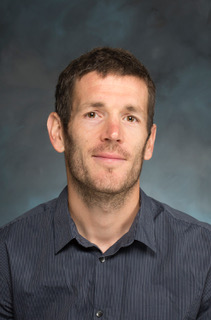
Speaker: Marius Millot
Website: https://eps.ucsc.edu/news-events/igpp-seminar/winter-2024.html
Cost: Free
=============================
Friday, 1/26/24 7PM
In-person
Telescope Makers Workshop
Chabot Space and Science Center
10000 Skyline Boulevard
Oakland, CA 94619-245
The Chabot Telescope Maker’s workshop reopens! Chabot’s TMW is one of only a handful of regularly scheduled telescope making workshops in the U.S., and probably the world; it meets every Friday evening throughout the year, except Memorial Day weekend. It has been in operation since December of 1930, founded by Franklin B. Wright, and is currently run by Eastbay Astronomical Society member Rich Ozer, with help from other EAS members, Dave Barosso, Barry Leska, and others. The price of admission is FREE. All you have to do is show
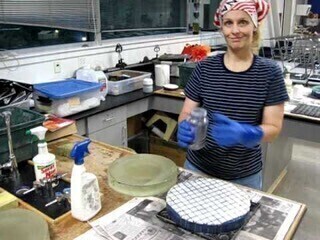
up, buy a mirror blank and a “tool” (typically around $100 – $200 depending on the size of the mirror) and start “pushin’ glass!” We supply you with instruction, the various grits you’ll need to first grind, and then polish and figure your mirror, and all the testing equipment needed. With a small bit of luck, you could wind up with a telescope that costs 1/3 or 1/4 the cost of a store-bought telescope, that is yet optically superior! It does take time – depending on how much time you put in on it, and other factors, it could take a few months.. But, it’s a fun project, great for kids, and at the end you get a great telescope!
Enter from the main loading dock behind the main building.
Please be prepared with proof of vaccination and a mask. These are
Chabot Rules, which we always must adhere to.
If you have a project, bring it with you so we can assess next steps.
You can also bring any other equipment or literature you may have
questions about.
For more information call or email Richard Ozer at richozer1@… or phone (510) 406-1914.
=============================
Friday, 1/26/2024 9PM-11PM for night observing and Saturday 1/27/2024
10AM-12 Noon for solar observing
In-person
Foothill Observatory is open again!
12345 El Monte Road
Los Altos Hills, CA 94022
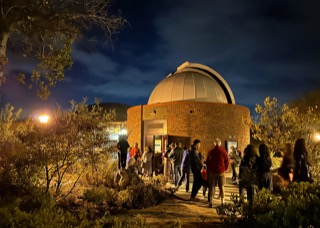
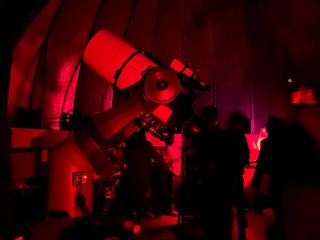
Foothill Observatory now Open EVERY clear Friday night and Saturday morning
The Foothill College Astronomy Department and Peninsula Astronomical Society (PAS) have reopened public viewing programs at Foothill College Observatory on:
· Every clear Friday night from 9 p.m. to 11 p.m. for star gazing
· Every clear Saturday morning from 10 a.m. to noon for solar viewing
Since we are still dealing with COVID, we are adopting the following guidelines to enable safe operation of the Observatory for both our public visitors and our PAS operators. We ask that visitors please agree to complying with these guidelines before visiting the Observatory, and to direct any questions to info@….
ATTENDANCE GUIDELINES
1. Full vaccination against COVID-19 is required to visit the Foothill College campus — This is a College requirement detailed on the Foothill College COVID-19 Behavioral Expectations page. So bring your vaccination certificate if possible.
2. Mask usage is required anytime visiting the Foothill College campus — This includes the Observatory, per the same college policy linked above in item 1.
3. The number of visitors allowed inside the Observatory is reduced — To avoid overcrowding within the limited space, please wait outside the observatory until a PAS telescope operator lets you and your group inside. Once your group is done viewing through the telescope, you will exit the Observatory so that a new group may enter.
Websites: https://foothill.edu/astronomy/observatory.html
=============================
Friday, 1/26/2024 and Saturday 1/27/2024
07:30 PM – 10:00 PM–Free telescope viewings are back!
In-person
Chabot Space and Science Center
10000 Skyline Blvd
Oakland, CA 94619
Free Telescope Viewings
Join Chabot astronomers on the Observatory Deck for a free telescope viewing! Weather permitting, this is a chance to explore stars, planets and more through Chabot’s historic telescopes. Chabot’s three large historic telescopes offer a unique way to experience the awe and wonder of the Universe. Our observatory deck offers breathtaking views 1,500 feet above the Bay. Three observatory domes house the Center’s 8-inch (Leah, 1883) and 20-inch (Rachel, 1916) refracting telescopes, along with a 36-inch reflecting telescope (Nellie, 2003).
Are the skies clear for viewing tonight? Viewing can be impacted by rain, clouds, humidity and other weather conditions. Conditions can be unique to Chabot because of its unique location in Joaquin Miller Park. Before your visit, check out the Weather Station to see the current conditions at Chabot.
Website: https://chabotspace.org/events/events-listing/
=============================
Saturday, 01/27/24
09:00 AM – 01:00 PM
Livestream
Vera C Rubin Observatory
Coloring the Universe with Rubin Observatory – Online
Vera C. Rubin Observatory has developed a series of FREE online astronomy investigations using authentic data that provide rich and interactive experiences for students, from advanced middle school through college, covering topics commonly taught in introductory astronomy classes or units.
This webinar, hosted by the ASP, will unpack how to access and teach all of the components of the new Coloring the Universe investigation, which incorporates the topics of electromagnetic radiation, digital image processing, and using filters and color to discover and communicate some properties of stars and galaxies. The investigation is designed to support the three dimensional learning model of the Next Generation Science Standards.
Participants will work together to explore the investigation and phenomenon, and some assessment materials There will be opportunities to reflect and discuss with colleagues how this investigation may be adapted to work in your classroom contexts.
The 4-hour webinar begins at 12:00 pm EST/ 9:00 am PST on Saturday, January 27 and concludes at 4:00 pm EST / 1:00 pm PST. Rubin Observatory will provide certificates of participation to all who attend the live webinar. The session will be recorded for those who may have time conflicts.
Register at weblink
Cost: Free
=============================
Saturday, 01/27/24 7:30 PM
Attend in person or on Facebook
East Bay Astronomical Society
Chabot Space & Science Center, 10000 Skyline Blvd
Classroom 4 formerly knows as Copernicus
Oakland, CA 94619
Lunar Landing Sites, Past and Future – Postponed
As we look back on the discoveries of the Apollo program, now more than fifty years ago, and stand on the verge of a new generation of lunar exploration through the Artemis Program, it is appropriate to reflect upon the sites chosen for lunar exploration. In this talk, we will look back at the Apollo landing sites, examine why they were chosen, and discuss what we learned from them. We will then look ahead to sites that have been identified for upcoming lunar exploration, both human and robotic. These sites each offer fascinating and compelling reasons for exploration. They will help answer key questions about the Moon and its history. Many will also facilitate a sustained human presence on the Moon.
The presentation will feature data gathered from many different instruments aboard a variety of spacecraft and made available through NASA’s Moon Trek online data visualization and analysis portal. The presentation will include an overview of using the portal so that audience members can follow and even become direct participants in this exciting new era of lunar exploration.
Speaker: Brian Day, NASA
Attend in person or on Facebook
This event was originally scheduled for November 11, 2023
Website: https://eastbayastro.org
Facebook: https://www.facebook.com/EastbayAstroSociety/videos/
Cost: Free
=============================
Saturday, 01/27/24
07:30 PM – 09:00 PM
Livestream and in-person
San Jose Astronomical Association
Houge Park
3972 Twilight Drive
San Jose, CA 95124
Is Anybody Out There? What’s New in the Search for Extraterrestrial Civilizations
What is the possibility of other intelligent life in the universe? Can we detect radio, infrared, or optical signals from other civilizations? Current and future SETI projects may provide an answer. Dan Werthimer will describe the rationale for past and future searches and will show how new technologies are revolutionizing SETI. Dan will describe Breakthrough Listen, SETI@home, the new PANOSETI wide field all-sky-all-the-time project, as well as concepts for future SETI.
Speaker: Dan Werthimer, Berkeley SETI Research Center
Website: https://www.meetup.com/sj-astronomy/events/298580547/
Cost: Free
=============================
Wednesday, 01/31/24
07:30 PM – 08:30 PM
In-person
Marin Science Seminar
320 Nova Albion Way
Terra Linda High School Innovation Hub 1st Floor
San Rafael, CA 94903
Wonderfest: The Most Famous Equation
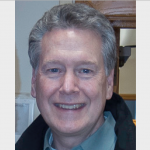
Around the world, people recognize that E=mc^2 oozes cosmic insight. But what does this “most famous equation” really say? What are energy and mass? And what makes the speed of light, c, so important? [Hint: mass, moving at speed c, doesn’t turn into energy!] Using little more than common experience and middle-school math, Einstein’s “special relativity” gem can come to life – with surprising insights into the nature of reality.
This event is co-produced by Wonderfest and Marin Science Seminar. Our speaker is long-time physics teacher Tucker Hiatt, founding director of Wonderfest. Tucker has been a Visiting Scholar in the Stanford Chemistry Department, and is a recipient of the Amgen Award for Science Teaching Excellence.
Website: https://wonderfest.org/most-famous-equation-4/
Cost: Free
=============================
Thursday, 02/01/24 6:30 PM
In-person
Ocean View Brew Works
627 San Pablo Ave.
Albany, CA 94706
Is Anybody Out There? Innovative Approaches in the Search for Extraterrestrial Civilizations
Speaker: Dan Werthimer, Berkeley SETI Research Center
Website: https://clear-project.org/pubscience/
Cost: Free
=============================
Friday, 02/02/24
12:00 PM – 01:00 PM
In-person
Earth and Marine Sciences Building
UC Santa Cruz
Room A340
Santa Cruz, CA 95064
Isotopes in planets: From the earliest planetesimals to the Moon forming giant impact
Speaker: Thomas Kruijer
Website: https://eps.ucsc.edu/news-events/igpp-seminar/winter-2024.html
Cost: Free
=============================
Friday, 02/02/24
06:00 PM – 10:00 PM
In-person
Chabot Space and Science Center
10000 Skyline Blvd
Oakland, CA 94619
First Friday: Celestial Cinema
Join Chabot in a galaxy far, far away to get a behind-the-scenes look at how space films are made and put the science in science fiction with experts in the field of filmmaking. Create your own flipbook sci-fi adventure, attend hands-on workshops and guest lectures, and take a trip to a distant galaxy in our Planetarium. First Friday: Celestial Cinema is a sci-fi fantasy adventure the whole family can enjoy!
Website: https://chabotspace.org/calendar/first-friday-celestial-cinema/
Cost: $15 General, $10 Kids/Seniors, $5 Members
=============================
Friday, 02/02/24 8:00 PM
In-person
San Mateo Co. Astronomical Society
College of San Mateo Bldg 36
1700 W Hillsdale Rd
San Mateo, CA 94402
N = 1: Alone in the Milky Way
Speaker: Dr. Pascal Lee
Planetary scientist Dr. Pascal Lee will review our present knowledge about each term of the Drake Equation used to estimate the number (N) of advanced civilizations present in our Milky Way galaxy, which is at the heart of the Search for Extraterrestrial Intelligence (SETI). He will examine star and planet formation, geological and biological evolution, the emergence of intelligence and technology, and possible fates of advanced civilizations. Even though planets are plentiful in the Milky Way and life as a natural product of chemical and biological evolution is likely common, he reaches the surprising conclusion that the number of advanced civilizations in our Galaxy is likely a small number, most likely N~1. Says Dr. Lee: “We might be it in the vastness of our galaxy, or there might be just one other…”. Implications of N~1 are profound and will be discussed.
Website: https://smcas.net/events/
Cost: Free
============================
Website: https://chabotspace.org/events/events-listing/
=============================
Saturday, 02/03/24
12:00 PM – 03:00 PM
In-person
Nike Missle Site
Field Rd
Mill Valley, CA 94941
Nike Missile Site Veteran Open House
Veterans of the Nike program come to the site to share their stories with visitors and give guided tours of SF88 between the hours of 12pm – 3pm
The SF-88 Nike Missile Site is the most fully restored Nike missile site in the country. During the tense years of the Cold War, from 1953 to 1979, the United States Army built and operated close to 300 Nike missile sites in the United States. These sites were designed to be the last line of defense against H-Bomb carrying Soviet bombers that had eluded the Air Force’s interceptor jet aircrafts. SF-88 in the Marin Headlands was one such site. Today, Golden Gate National Recreation Area works together with a dedicated group of volunteers to preserve the site as it was during operations to remind visitors of the physical and psychological effects of the Cold War on the American landscape.
=============================
Saturday, February 03, 2024
Sunset: 5:35 PM
In-person
San Mateo Co. Astronomical Society
Crestview Park
1000 Crestview Drive
San Carlos, CA
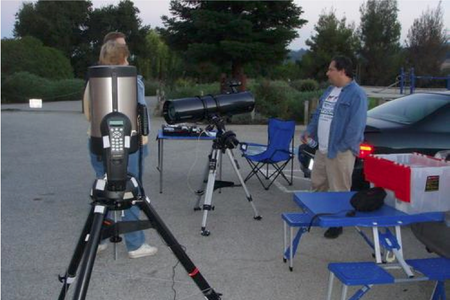
Public Star Parties at Crestview Park in San Carlos
SMCAS and the City of San Carlos Parks Department host a public star party at Crestview Park in San Carlos twice a month when there is a new moon. Members set up telescopes and let the public view and share their knowledge of the night sky all for Free. All ages are welcome. If you have kids interested in space or science, bring them here for a real time view of planets, nebula, star clusters, and galaxies.
If you are a Non-member and own a telescope, bring it to share! Experts are available if you need assistance or have questions about buying a telescope.
Telescope setup begins at sunset and observing starts one hour after sunset. In the event of inclement weather (rain, clouds, fog, or high winds) the star party will be cancelled. Because each astronomer makes his or her own decision about bringing their telescope, there is no official cancellation notice.
Crestview Park is located at 1000 Crestview Drive in San Carlos
=============================
Saturday, 02/03/24
06:30 PM – 08:30 PM
In-person
Rancho Cañada Del Oro Open Space Preserve
4289 Casa Loma Rd
Morgan hill, CA 95037
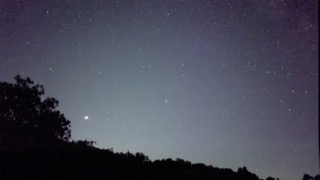
Starry Nights Star Party
The San Jose Astronomical Association (SJAA), working with the Santa Clara County Open Space Authority (OSA), is glad to co-host a public star party at Rancho Canada del Oro (RCDO) Open Space Preserve. This site, just 30 minutes south of downtown San Jose, features dark skies. It’s dark enough to see the band of our Milky Way galaxy in the summer.
Do not bring your own telescope (binoculars are welcome, but please no tripods). SJAA club members will set up their telescopes to help star party guests get the most knowledge and enjoyment out of the dark night sky.
In addition to traditional telescopes, the SJAA has incorporated Electronically Assisted Astronomy (EAA) into the Starry Nights Program. We will be using an automated telescope with a camera-like sensor to show live images on an iPad.
· This is a family friendly event, and although younger children are welcome, this activity is best suited for children aged 5 years and older.
· No touching the telescopes or eyepieces. (Maybe a focus knob, if instructed by the astronomer. It’s OK to ask).
· Dress in warm layers (it gets cold at night).
· Flashlights: To help preserve everyone’s night vision, if you bring a dim white flashlight, be sure to have it wrapped in red plastic, or get it wrapped at the sign-in desk.
· Registration for this event has a limit of approximately 85 people due to available parking space at the observing site.
Registration required at weblink
Website: https://www.meetup.com/sj-astronomy/events/297873723/
Cost: Free
=============================
Sunday, 02/04/24
01:30 PM – 03:30 PM
In-person
San Jose Astronomical Association
Houge Park
3972 Twilight Drive
San Jose, CA 95124
Solar Observing
It’s there for us year round, lighting our days and providing energy for our lives, so maybe it’s time to give it a closer look. Join SJAA for amazing and detailed views of the Sun, and be assured that we’ll be using special telescopes that will keep your eyeballs perfectly safe.
We’ll have white-light telescopes with dense solar filters that reveal sunspots. Further, we’ll show you hydrogen-alpha telescopes that isolate a very specific color of red that reveals prominences (often thought of as solar flares) and intricate texture within the Sun’s chromosphere (its atmosphere).
We can also share with you a little about how the Sun works and how complex magnetic fields drive the number of sunspots and prominences that we’ll see on a given day.
Around 1:45, we’ll have a short, informal introductory talk, and at other times, you can enjoy the views and ask questions about the Sun, telescopes, or astronomy in general.
We’re also planning station for your get a better feel for a huge scale of our solar system! And you’ll get a solar system you can fold up and carry in your pocket.
You may bring your own telescope. If you have a properly filtered white light or H-alpha telescope and want to share views with others, please arrive at 1:30 or earlier, so you have time to set up before the event officially starts.
Weather dependent. Sign up at weblink
Website: https://www.meetup.com/sj-astronomy/events/298550024
Cost: Free
=============================
Monday, 02/05/24
07:30 PM – 09:00 PM
In-person
Benjamin Dean Astronomy Lecture
California Academy of Sciences
55 Music Concourse Dr.
San Francisco, CA 94118
The Hunt for the First Galaxies
Seeking the first galaxies to form after the Big Bang is the primary rationale for building the James Webb Space Telescope (JWST). These first galaxies have eluded the Hubble Space Telescope (HST) because the expansion of the Universe has stretched their light to wavelengths undetectable by HST. With its increased sensitivity in infrared light, JWST has discovered hundreds of galaxies more distant than HST could possibly detect, and the first galaxies are forming stars earlier and more rapidly than expected.
Speaker: Dr. Marcia Rieke, University of Arizona
Website: https://www.calacademy.org/events/benjamin-dean-astronomy-lectures/the-hunt-for-the-first-galaxies
Cost: $15 General, $12 Members & Seniors
=============================
Tuesday, 02/06/24 3:30 PM-rescheduled from 01/30/2024
In-person
Hewlett Teaching Center
370 Jane Stanford Way, Room 201
Stanford University
Stanford, CA 94305
Extreme Electrodynamics of Neutron Stars and Black Holes
The development of classical electromagnetism and quantum electrodynamics are highpoints of nineteenth and twentieth century physics, respectively. Recent, remarkable discoveries, involving neutron stars and black holes, are taking electrodynamics into unfamiliar and “extreme” territory, requiring new theoretical approaches. Examples include 100 GT (10^15 Gauss) magnetic fields surrounding neutron stars (and possibly a hundred times greater within neutron stars), the production of radio waves with effective temperatures of 10^40 K, gravitational wave sources with powers as high as 10^49 W, the emission of neutrinos and gamma rays with energies in the PeV range and the acceleration of cosmic rays with energies up to million times greater than this, perhaps involving EMFs as large as 10^23 V, generated by spinning, black holes. The rapidly developing observational situation will be summarized, along with some of the competing ideas and approaches under active investigation.
Speaker: Roger Blandford, Stanford University
Cost: Free
=============================
